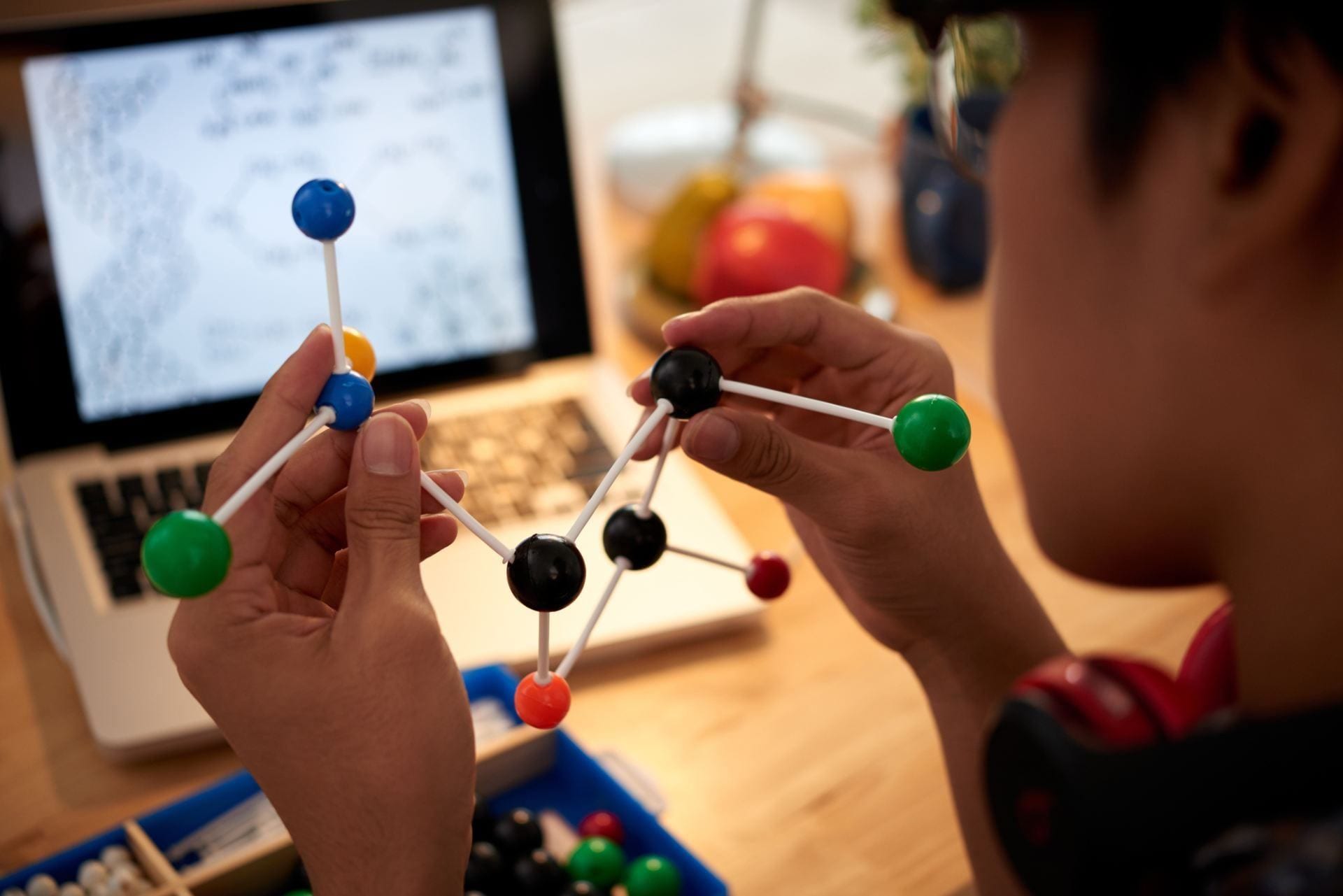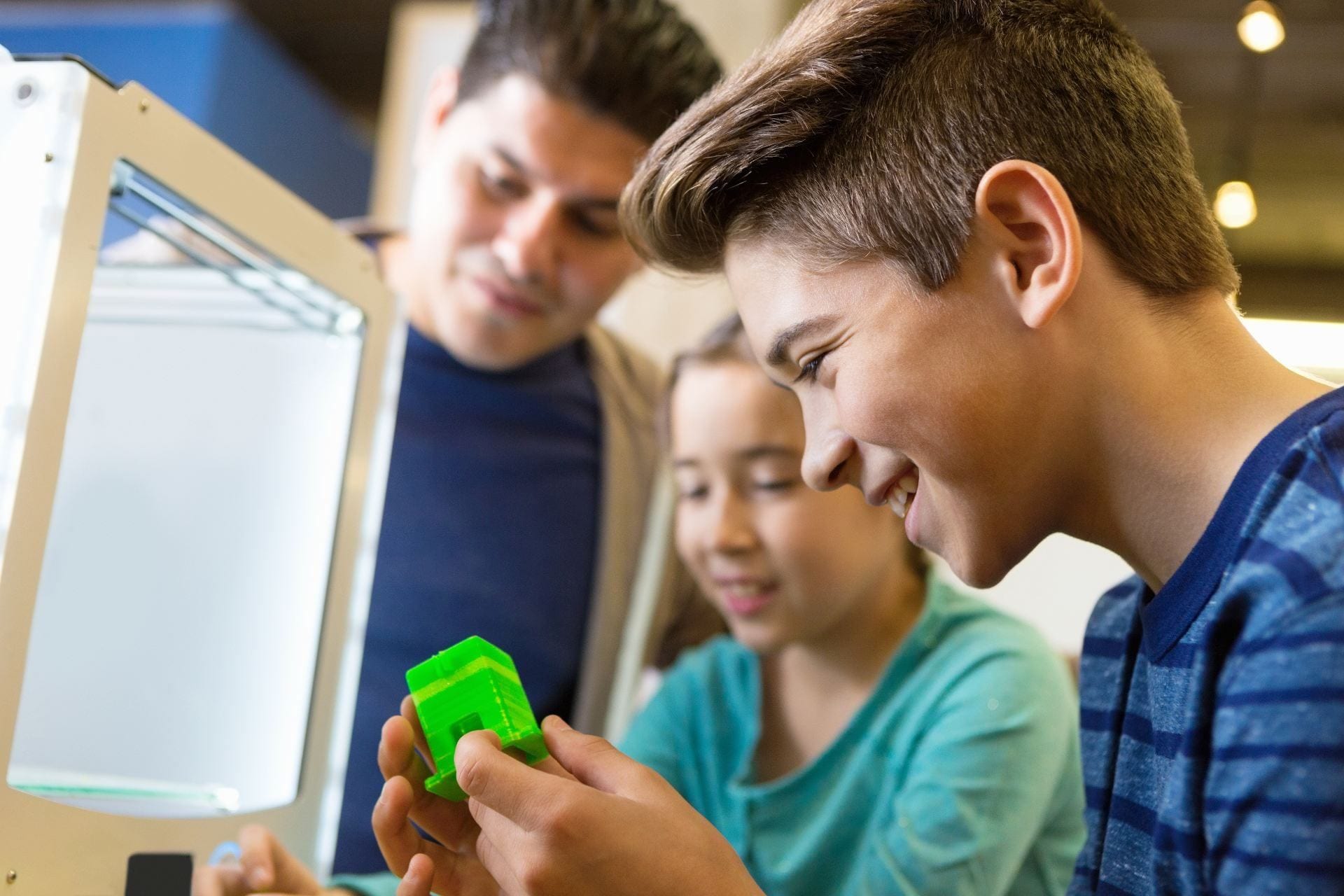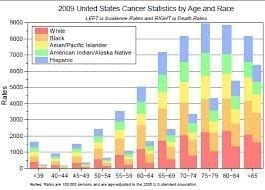Level 9 to 10
Explore the development of numeracy from Levels 9 to 10
Home » Numeracy Focus Areas » Level 9 to 10
How does numeracy appear in this context?
What might you expect students to do?
At Level 9, in a numeracy context students develop familiarity with a broader range of non-linear and linear functions and relations, and related algebra and graphs.
They solve problems involving direct proportion and rates, and simple interest; identify issues and questions involving categorical and numerical data, and apply geometric reasoning to solve problems involving ratio and scale factors.
By level 10, students extend their use of mathematical models to a wide range of familiar and unfamiliar contexts, involving the use of all types of real numbers. They recognise the role of logical argument and proof in establishing mathematical propositions, be able to apply mental, written or technology-assisted forms of computation as appropriate, and routinely use estimation to validate or provide bounds for their answers.
The Victorian Numeracy Learning Progressions provide a sequence of key numeracy indicators from Foundation to Level 10 that have been used in the descriptors for each Numeracy Focus.
For specific mathematics content descriptions and achievement standards, see the Victorian Curriculum F-10.
Developing number sense
Quantifying numbers, using additive and multiplicative strategies
Developing number sense includes quantifying numbers, estimating, using additive and multiplicative strategies, as well as:
- Using different ways to represent very large and very small numbers including scientific notation
- Solving and modelling problems involving complex data by estimating and calculating using a variety of efficient mental, written and digital strategies.
Everyday contexts and cross-curricular examples involving quantifying numbers, estimating, using additive and multiplicative strategies:
- Economics: Financial planning to support specific financial goals
- Media: The news reports the top 10 richest people in the world each year. How big is a billion dollars? A trillion dollars?
- Science: Nanotechnology. For example 64GB flash drives; keyhole surgery
- Learning about Aboriginal and Torres Strait Islander histories and culture: Base Five or “One-Hand” counting system, see Australian Institute of Aboriginal and Torres Strait Islander Studies or State Library of Queensland
Language to make numeracy focus explicit:
- Billion, trillion, quadrillion, quintillion, googol, nanoseconds, Mb, GB, etc
- How long would it take to count to a billion?
- How much is Australia’s national debt? What factors impact the national debt, and how can it be reduced?
- What is the largest number we can represent on a scientific calculator?
- How big is a molecule? An atom? A proton? A body cell?
- How many grains of sand on a beach? Atoms in the universe?
Micro algae are microscopic algae, typically found in freshwater and marine systems. Consider the size of this unicellular species which has been captured using a Scanning Electron Microscope.
Image source: CSIRO, Health and Nutrition Sciences
The video displays a $100 note then more notes in bundles. Milestone values are shown as collections of bundles and compared by size to familiar items.
Exploring patterns and relationships
Using number patterns and thinking algebraically
Exploring patterns and relationships includes using number patterns and thinking algebraically, as well as:
- Explaining how the practical application of patterns can be used to identify trends
- Understanding algebraic expressions and relationships through algebraic models.
Everyday contexts and cross-curricular examples involving number patterns and relationships:
- Health and Physical Education: Body Mass Index (BMI), Developing and critiquing endurance exercise programs
- Art (Architecture): Creating and critiquing architectural designs for space optimisation
- Science: Biochemical modelling of disease control and epidemic spread predictions.
Language to make the numeracy focus explicit:
- Modelling, prediction, equation, formula, relationships-linear, polynomial, repeating (trigonometric), growth, decay, expression, unknown, variable, representation, generalisation, graph
- Population or disease statistics or petri-dish cultures or financial reports or history data: “What is the pattern here? What might we expect to see in one, two, three years/weeks/months”? Can we make a prediction? How long into the future might our prediction remain true?
- Can we write a formula to represent the pattern?
- What trends (pattern) does the graph suggest in the data?
Patterns such as DNA can be analysed through mathematical modelling
Using proportional reasoning
Operating and interpreting decimals, fractions, percentages, ratios and rates
Using proportional reasoning includes operating and interpreting decimals, fractions, percentages, ratios and rates, as well as:
- Interpreting, illustrating and ordering relationships and solving problems involving fractions, decimals, percentages, ratios and rates.
Everyday contexts and cross-curricular examples involving proportional reasoning:
- Health and Physical Education: Nutritional information, percentage of daily intakes; food labels and health claims
- Economics and Business: GST calculations; interest rates and mortgages; student loans
- Science: chemistry titrations; physics rates of change
- The Humanities: Synthesise numerical data and texts to communicate information and support conclusions about social, economic and environmental issues.
Language to make the numeracy focus explicit:
- Proportion, rates, ratios, direct, indirect, compound interest, equivalence between percentages, fractions, and decimals
- “How much do we need to add to a solution to dilute it by 30%?”
- “How does the length of a didgeridoo affect the sound that it makes?”
- “Which car arrives sooner? One that travels 30 km/h over 70 km or one that travels 45 km/h over 90 km.”
- “Can we have more than 100%? In what context?”
- “What is the financial cost of buying a car if you borrow money from the bank? Consider the impact of compound interest on your loan.”
- “What is the best buy? Use examples from the supermarket, e.g. 1L of oil at $4, 333ml at $1.30?”
- “What is the ratio of males to females in Victoria? What is the total number of females and males in Victoria?”
Discounts of products are often demonstrated as percentage discounts. The discounted price is a proportion of the original sale price
Understanding and using geometric properties and spatial reasoning
Understanding and using geometric properties and spatial reasoning includes:
- Creating and interpreting maps, models and diagrams using a range of mapping tools
- Visualising, describing and analysing the way shapes and objects are combined and positioned in the environment for different purposes (2D and 3D).
Everyday contexts and cross-curricular examples involving geometric properties and spatial reasoning:
- Chemistry: Atomic models
- Geography/Earth Science: Google maps and satellite imagery
- Design Technologies: Create models using graphics software
- Visual Arts: 3D printing
- Industrial Design: economical 3D packaging for items – functional vs aesthetics.
Language to make numeracy focus explicit:
- Scale diagrams, latitude, longitude, geocaching, geometric properties, regular and irregular polygons, polyhedral, dimensions, lattice, grid references, tessellation, net, congruence, transformation, rotation, reflection, symmetry, visualisation
- “How is origami used in the development of space stations?”
- “How can we tell the scale from a Google satellite view map?”
- “Can we tessellate a floor covering using only pentagons? Other shapes? Why or why not?”
Visualising geometric properties through mathematical modelling and 3D printing
Understanding, estimating and using measurement
Understanding, estimating and using measurement includes:
- Estimating and measuring with metric units
- Solving complex problems involving surface area and volume of prisms and cylinders and composite solids
- Solving time-related problems and use large and small timescales in complex contexts.
Everyday contexts and cross-curricular examples involving understanding, estimating and using measurement:
- Construction Industry; Woodwork; Metalwork
- History: carbon dating; historical and geological time scales, e.g., evolution, palaeontology
- Science: Astronomy, planets, solar system, galaxies, and the universe; light years and scale diagrams. For example, see the Solar System Trail at St Kilda Beach or you can map it out on a playing field using a tennis ball as the sun
- Geography: Time zones, international travel using 12- and 24-hour clocks and timetables
- Learning about Aboriginal and Torres Strait Islander histories and cultures:
- seasonal calendars based on the local sequence of natural events. For examples, see the Australian Bureau of Meteorology’s Indigenous Weather Knowledge
- how Aboriginal peoples and Torres Strait Islander peoples apply their knowledge of stars, constellations and the moon to tell time. For examples, see Astronomy and Australian Indigenous People.
Language to make numeracy focus explicit:
- Millennium, nanoseconds, international dateline, capacity volume of prisms, surface area, perimeter, circumference, cubic centimetres, metres, and millilitres, visualisation, estimation, sensible answers
- “If we represented the sun with a soccer ball, and placed it at one end of a football field, where would the earth be? What object could we use to represent its size?”
- “How much does a cubic metre of sand weigh?”
- “How long does it take to get from Warracknabeal to Mooroopna? Walking? Cycling? In a car? By horse? By road? In a direct line?”
- “Is there a difference in how long it would take you to drive around Australia if you went clockwise or anti-clockwise?”
Measurement is used in the process to create products. Here a tape measure is used to find the length of wood required
Exploring chance and data
Exploring chance and data includes:
- Evaluating media statistics and trends by linking claims to data displays, statistics and representative data
- Explaining the likelihood of multiple events occurring together by giving examples of situations when they might happen.
Everyday contexts and cross-curricular examples involving exploring chance and data:
- Health and Physical Education: Gambling and potential addictions, e.g. smoking and
likelihood of cancer, other health risk factors - Geography: Interpreting graphs or statistical information to compare countries, gross domestic product, national debt, literacy rates
- Science: experimental error; modelling and confidence intervals
- English: Media reports and data interpretation; recognising bias or non-factual information in news reporting.
Language to make numeracy focus
- Data, distribution, variance, variability, samples, populations, expectation, prediction, bias, fairness, independence, representation, proportion, chance, probability, event, outcome, experiment, with and without replacement, “If,…then…” statements, averages-mean, median, mode; range, standard deviation
- “What do we mean when we say the average wage is $65000?”
- “Which is more important in a sporting contest? The mean or the mode? Is it different for different sports? How relevant are they, e.g. in a high-jump?”
- “Is it possible to have a strategy for winning
lotto ?” - “Find examples in the media when a pie graph more appropriate than a bar graph to represent data?
- “Is it more dangerous to ride a horse than fly in an
airplane ?” “What is the risk of dying with each?” - “Which is the riskiest sport to play in Victoria? Why, how do you know?”
- “Why are casino games unfair for patrons? Investigate and rank casino games in order of unfairness?”
Evaluating media statistics and trends by linking claims to data will support deeper understanding of how data can be used to mislead users
Statistics guru Hans Rosling presents global trends in health and economics in this engaging TED Talk.
Further Resources
The Numeracy Learning Progressions mapped to the Victorian Curriculum: Mathematics (VCAA, 2017). These outline a sequence of observable indicators of increasingly sophisticated understanding and skills in 15 key numeracy concepts across year levels. Review the Numeracy Learning Progressions
Levels 9 to 10 of the Victorian Curriculum: Mathematics (VCAA, 2017) from Foundation to Level 10. Explore the Victorian Curriculum Levels 9 to 10
The At a glance: Literacy and Numeracy teaching resources provides a snapshot of resources available to teachers to support the teaching and learning cycle. Review the At a glance resource
The ReSolve project, offers many rich tasks which effectively address numeracy components across Levels 9 to 10. For example the “Mathematical Modelling” task which spans levels 9 and 10 and introduces students to mathematical modelling: formulating real world problems mathematically so that they can be analysed and better understood. Students interpret the mathematical results to make practical decisions and communicate the reasons for their decisions clearly to others. The problems to be investigated include situations such as predicting traffic flow, designing packaging that meets multiple criteria, making decisions about how to price goods to ensure a profit, and designing games. Delve into the ReSolve project now







